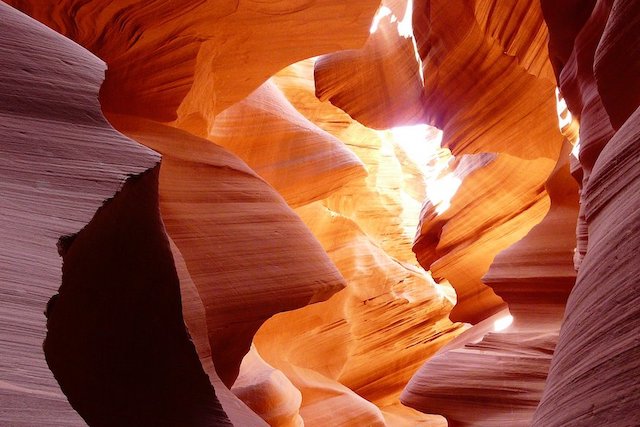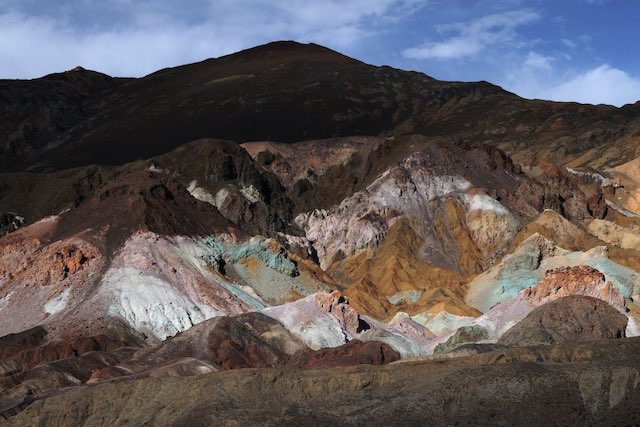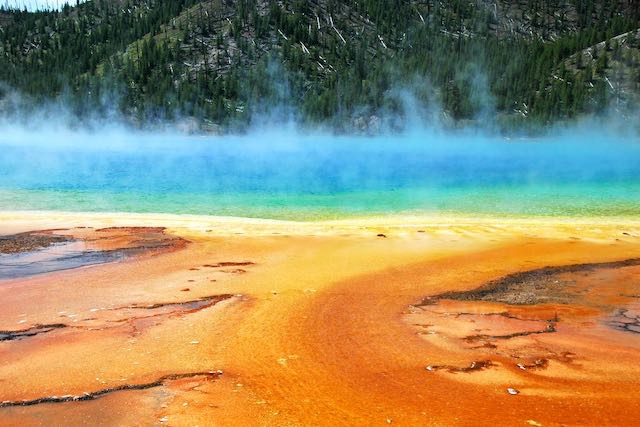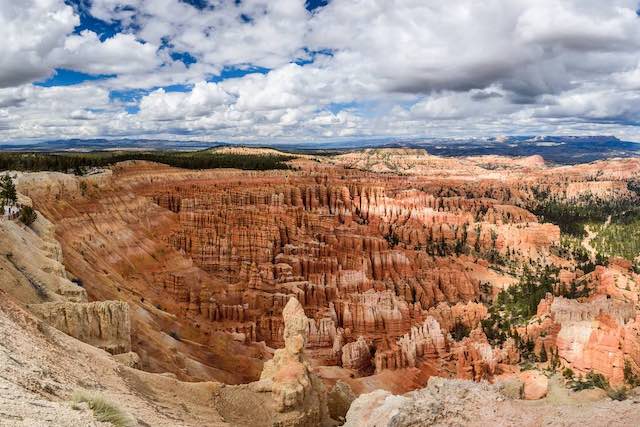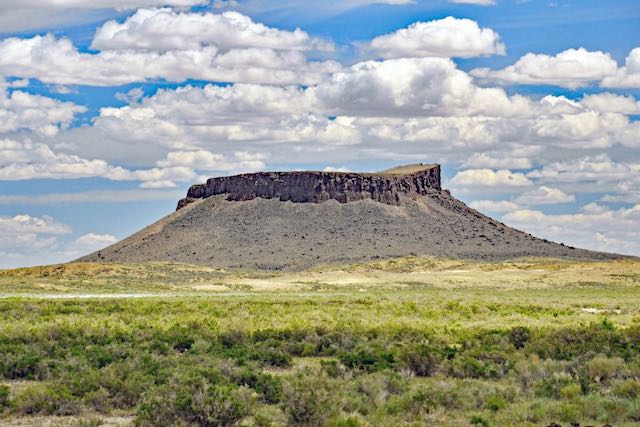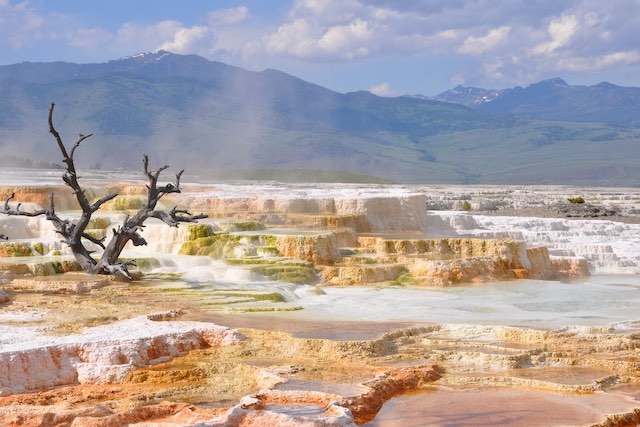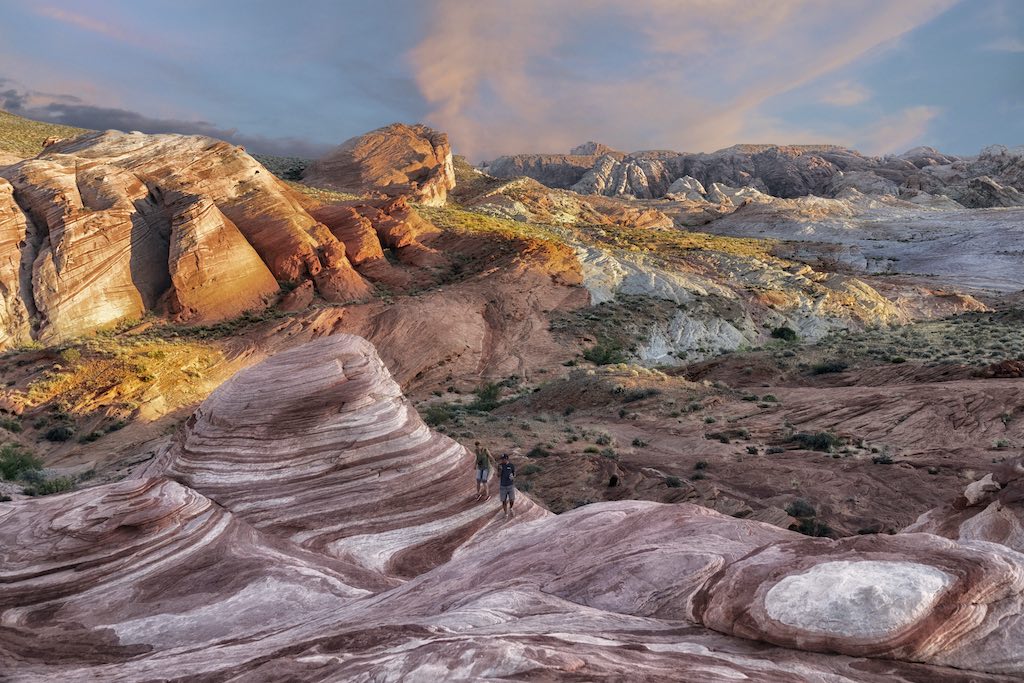
Sandstone with swirling flame-like patterns
In the Valley of Fire State Park in southeastern Nevada, USA, there is a distinctive sandstone formation with beautiful red and white swirling patterns. As the name “Valley of Fire” implies, the formations look like swirling flames. When the sunrise or sunset lights up the area, it looks even redder.
The location of Valley of Fire State Park is about 80 kilometers northeast of Las Vegas. The flame-streaked sandstone is said to have been formed about 150 million years ago. In terms of geological time, this period corresponds to the end of the Mesozoic Jurassic era, when a wide variety of dinosaurs evolved and flowering plants appeared. Archaeopteryx, which has the characteristics of both birds and dinosaurs, is also a fossil from this period.
The most distinctive feature of the sandstone in the Valley of Fire is its bright red color. The red color is basically the color of iron oxide, or iron rust (the rusting of iron is called oxidation). Red sandstone is formed when iron oxide particles are deposited on the surface of the sand crumbs that make up the sandstone, or when iron oxide minerals fill in the spaces between the sand crumbs.
So what happened to the white areas? Either they didn’t contain the iron oxide particles and minerals to begin with, or they were removed later by groundwater. Most of the Valley of Fire is red sandstone, but in some places it is striped with white strata, as shown in the photo at the beginning of this article.
Rainbow-colored sandstone
The colors of the sandstone in the Valley of Fire are not limited to red and white. In some places, you can see rainbow-colored formations like the one in the next picture.
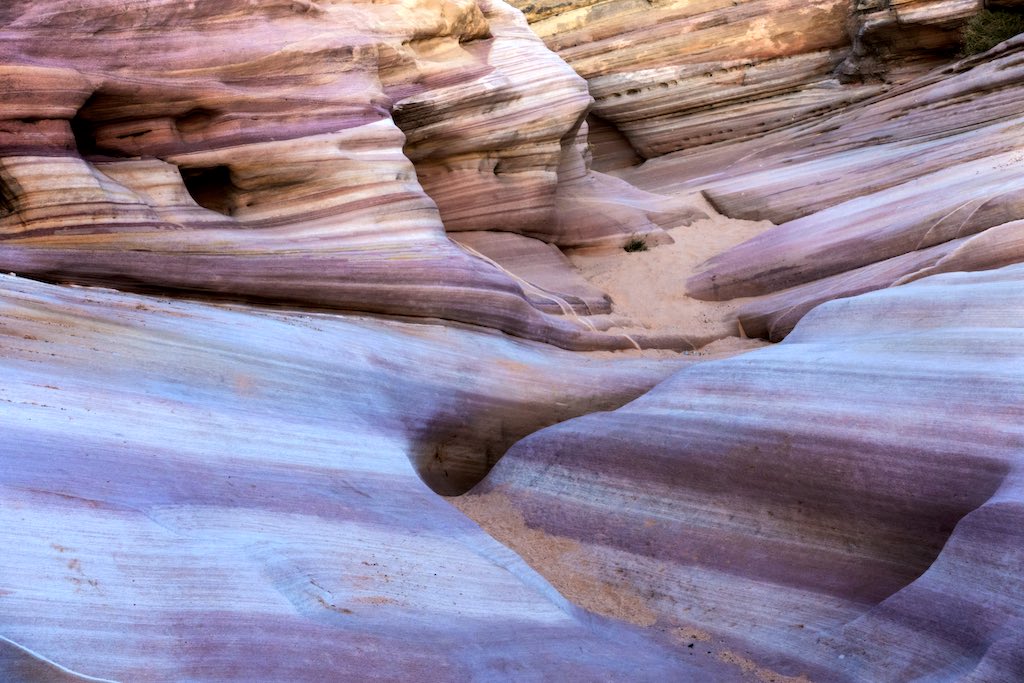
There are many colors in the strata. Red, pink, orange, yellow, brown, blue, purple, and gray. Iron oxide is the main cause of these rainbow colors, but let’s take a closer look at how the different colors are created.
There are many different types of iron oxides in the word “iron oxide”. There is hematite, which is reddish in color, limonite, which is yellowish in color, and ferrihydrite, which is not crystallized properly. Moreover, although the basic color is red or yellow, it often looks blackish.
When these iron oxides are included in various proportions, colors such as red, pink, orange, ochre, and brown appear. Then, as the colored parts are washed away by groundwater, pale yellow, gray, white, and other colors appear. In addition, other elements such as manganese are added to the mix, expanding the range of colors. This is how the rainbow-colored strata are formed.
Dunes hardened into sandstone
It is believed that there was a complex process that led to the formation of the Valley of Fire terrain. The major process is that sandstone strata were raised (uplifted) by tectonic movement, faults were formed, and then extensive erosion occurred to create the terrain we see today.
About 70 to 55 million years ago, this area of western North America was raised by a massive uplift called the Laramide orogeny. Some areas emerged from the sea floor for the first time during this period, while others were originally land and rose even higher.
As for the area of the Valley of Fire, the most popular theory is that it was already land before the Laramide orogeny. Apparently, it was an inland sand dune.
As already mentioned, the sandstone of the Valley of Fire was formed about 150 million years ago, which means that it was already land at that time. From there, it rose due to Laramide orogeny, and as a result of extensive erosion over a long period of time, it is now about 400 to 900 meters high.
By the way, I mentioned earlier that the Valley of Fire was an inland sand dune, but it is also very strange that sand dunes can harden into sandstone. For example, I can’t imagine that the Sahara Desert or the Tottori Sand Dunes in Japan will become tumbling sandstone in the distant future.
It is said that there are two main processes by which accumulated sand becomes sandstone. One is that the weight of the accumulation on top compresses and hardens the strata below. The other is that a cement-like substance that binds the sand crumbs together seeps into the stratum and solidifies the collection of sand crumbs.
It is hard to realize that sand dunes become sandstone, but I hope you can imagine it as a phenomenon that has gradually progressed throughout the long history of the earth.
References
Katsuaki Watanabe (2020) Utsukushisugiru chigaku Jiten (Handbook of the Most Beautiful Geological Wonders), Tokyo: Shuwa System [published in Japanese].
Red rock Canyon Las Vegas | Geology Highlights
Location
Translated with www.DeepL.com/Translator (free version)

